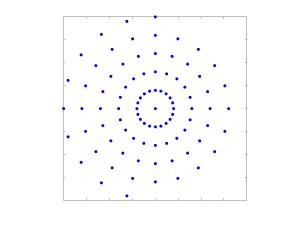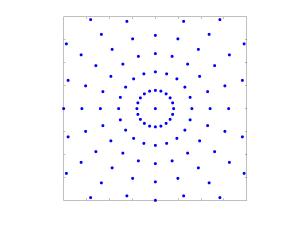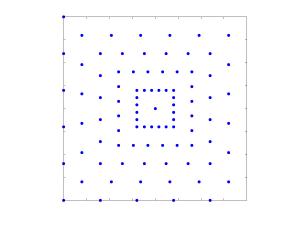Polar FFT
The polar as well as the pseudo-polar FFT can be computed very accurately and efficiently by the nonequispaced FFT. Furthermore, we apply the reconstruction of a 2d signal from its Fourier transform samples on a (pseudo-)polar grid by means of the inverse nonequispaced FFT. |
 |
 |
The algorithms are implemented by Markus Fenn and Stefan Kunis in
./applications/polarFFT. Related paper are
On the computation of the polar FFT.
Appl. Comput. Harm. Anal. 22, 257-263, (full paper ps, pdf), 2007
Probability against condition number and sampling of multivariate trigonometric random polynomials.
Electron. Trans. Numer. Anal. , 26, 178-189, (full paper ps, pdf), 2007
A probability argument in favor of ignoring small singular values.
Operator Theory: Advances and Applications, 1, 31-43, (full paper ps, pdf), 2007
